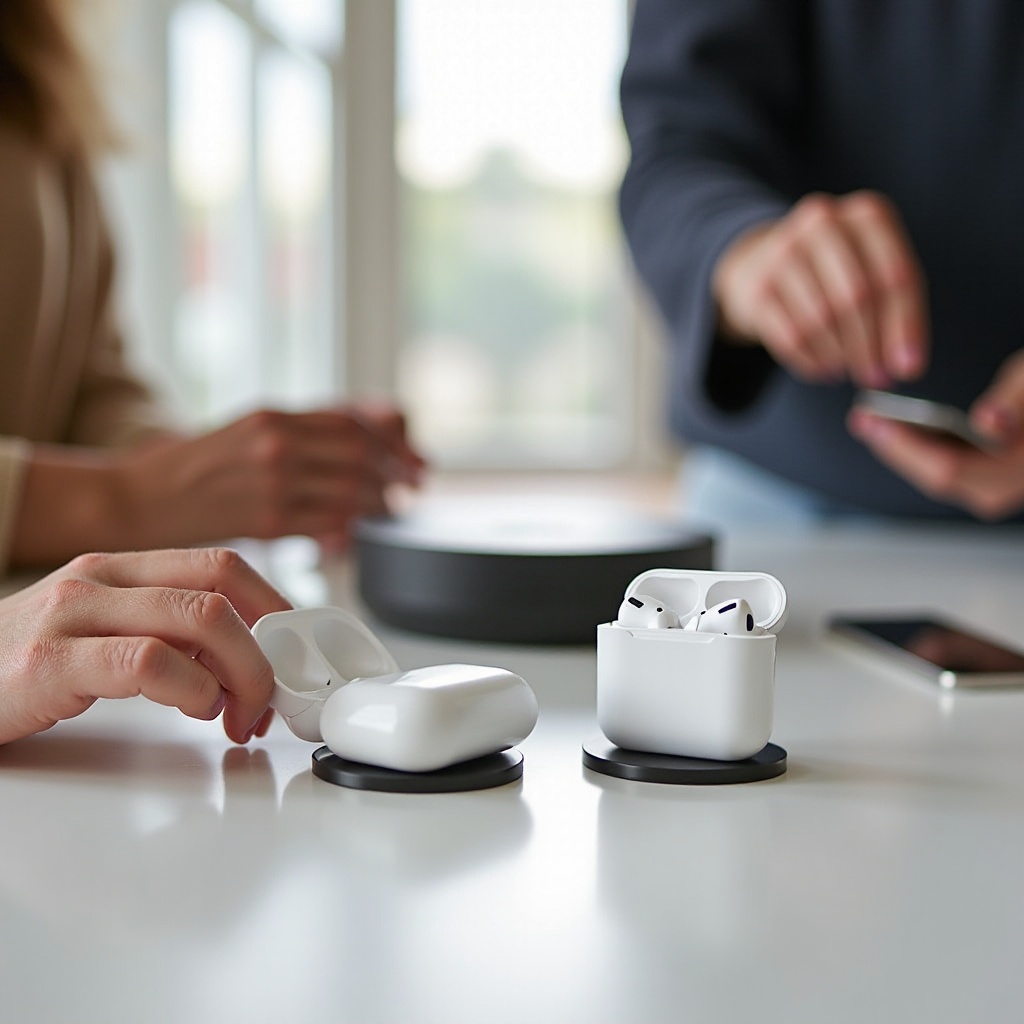AirPods Pro 2nd Generation: Lightning vs USB C
Introduction
Apple's AirPods Pro 2nd Generation have made a significant impact in the wireless earbud market. Among the many features and improvements, a notable talking point is the choice of charging port. Apple offers the AirPods Pro 2nd Generation with either a traditional Lightning port or the increasingly popular USB C port. This decision can significantly affect user experience, charging performance, and compatibility with various devices. In this article, we'll dissect the differences between these two charging options to help you make an informed choice.
The Basics of AirPods Pro 2nd Generation
The AirPods Pro 2nd Generation come with a slew of enhancements over their predecessor. They feature improved sound quality, better noise cancellation, and longer battery life. Additionally, they inherit the intuitive design and seamless integration with Apple’s ecosystem that the AirPods line is renowned for. However, while those features are critical, the type of charging port is also a significant factor to consider.
Apple has traditionally used its proprietary Lightning connector in many of its devices, including iPhones and iPads. With the growing adoption of USB C in recent years, Apple has started incorporating this universal standard into its newer products. The decision between sticking with Lightning or moving to USB C for the AirPods Pro 2nd Generation may appear minor, but it affects day-to-day usability and compatibility.
Lightning Port in Detail
The Lightning port has been a staple of Apple products since its introduction in 2012. It is compact, durable, and reversible, making it easy to use. For AirPods users who have been within the Apple ecosystem for a long time, having a Lightning port on their AirPods Pro 2nd Generation ensures uniformity with other Apple devices, such as iPhones and older iPads.
Key features of the Lightning port include: - Proven reliability and durability - Compatibility with a wide range of Apple devices - Established accessory ecosystem, including chargers and docks
However, the Lightning port is proprietary, meaning that it is exclusive to Apple devices. This exclusivity can limit compatibility with non-Apple devices, which rely more heavily on USB C connections.
USB C: The New Standard
USB C has rapidly become the go-to connector for modern electronics. It offers several advantages over older standards, including the Lightning port. USB C is known for its fast data transfer rates, higher power delivery, and universal compatibility with various devices, ranging from laptops to smartphones to peripheral devices.
For the AirPods Pro 2nd Generation, USB C introduces: - Fast charging capabilities - Broader compatibility with non-Apple devices - Future-proofing as more devices and accessories adopt USB C
While transitioning to USB C might be more convenient for users with a mix of Apple and non-Apple devices, it can be a slight inconvenience for those deeply entrenched in the Apple ecosystem.
User Experience: Lightning vs USB C
Charging Speed Comparison
When comparing charging speeds, both the Lightning and USB C ports offer efficient charging for the AirPods Pro 2nd Generation. However, USB C has a slight edge due to its higher power delivery capability, which can translate to faster charging times, especially when connected to more powerful USB C chargers. Users looking for rapid top-ups might prefer USB C.
Compatibility with Other Devices
Lightning connectors are primarily compatible with Apple devices, limiting their versatility. In contrast, USB C is widely used across various devices, including Android smartphones, laptops, tablets, and more. Therefore, USB C provides greater flexibility in terms of charging scenarios and device compatibility, making it a more universal choice.
Port Durability and Long-term Use
Both Lightning and USB C ports are built to withstand regular plug and unplug cycles. The Lightning port's compact design has proven durable over the years, but USB C offers a more robust and future-proof solution. USB C connectors are designed for increased durability and can handle more connections without wear and tear, providing assurance for long-term use.

Market Consensus on Charging Options
Market preferences have been shifting towards USB C, driven by its widespread adoption and versatility. Many modern devices, beyond just smartphones, now use USB C, making it a comprehensive standard. The European Union has also passed legislation requiring a common charging standard, aiming to reduce electronic waste—further tilting the market towards USB C.
However, Lightning remains popular, especially among loyal Apple users who value consistency within the Apple ecosystem. As USB C continues to gain traction, the market consensus is gradually moving towards it as the preferred option for future-proofing and universal device compatibility.
Conclusion
Choosing between Lightning and USB C for your AirPods Pro 2nd Generation boils down to your specific needs and preferences. If you're deeply embedded in the Apple ecosystem and value consistency, the Lightning port may serve you well. On the other hand, if you seek faster charging, broader compatibility, and a more future-proof solution, USB C stands out as the favorable option. Either way, both ports offer reliable and efficient charging for your AirPods Pro 2nd Generation.
Frequently Asked Questions
What are the key differences between Lightning and USB C for AirPods Pro 2nd Generation?
The main differences include Lightning’s compatibility with Apple devices and USB C’s faster charging and broader compatibility with non-Apple devices.
Which charging option provides faster charging for AirPods Pro 2?
USB C typically offers faster charging due to its higher power delivery capability, especially when using high-power USB C chargers.
Are there any longevity concerns with Lightning or USB C ports on AirPods Pro 2?
Both ports are durable, but USB C is designed for increased durability and can handle more connection cycles, making it a more robust long-term option.



